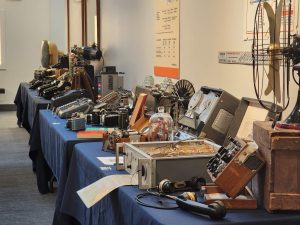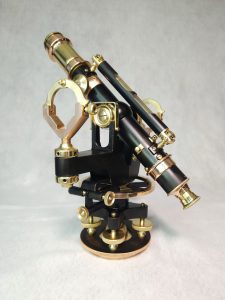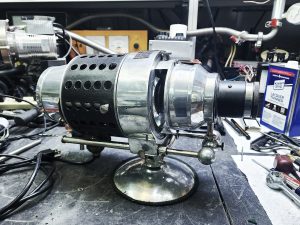This started as a surprise, this was a donation to the lab! Speaking of donations, if you have an item you would like to donate to the lab, use the contact form under the ‘About’ section to reach out! Would love to hear from you! If even a lean on a cool item. Also if you wish to just support the lab their is also a donate tab at the top, every bit helps keep things going! I invest a ton of time and money into keeping this website going each month.
Ok with that aside, lets get to this awesome fire extinguisher! Here is how it looked to start. Had a great patina to it already. Almost contemplated keeping it.
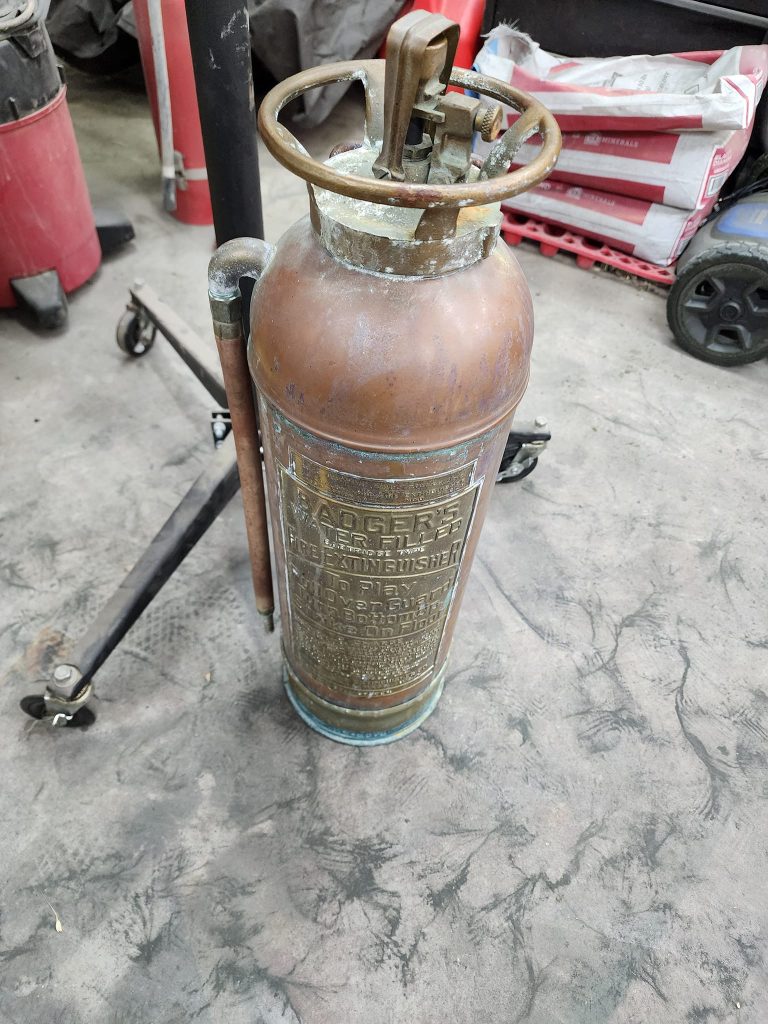
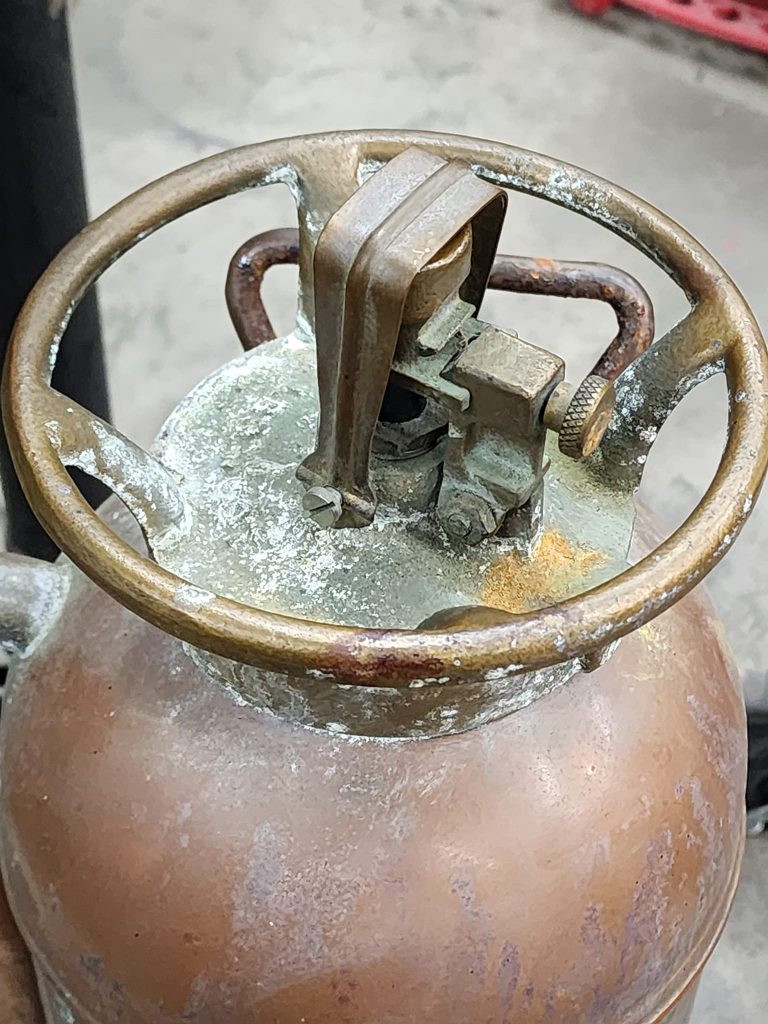
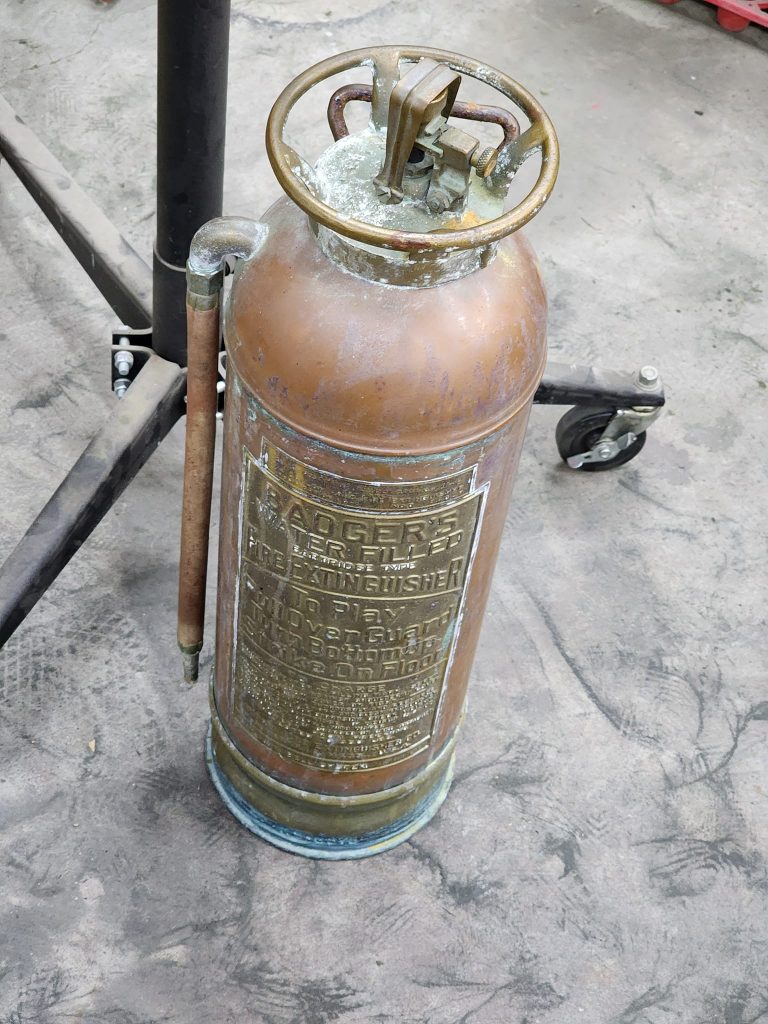
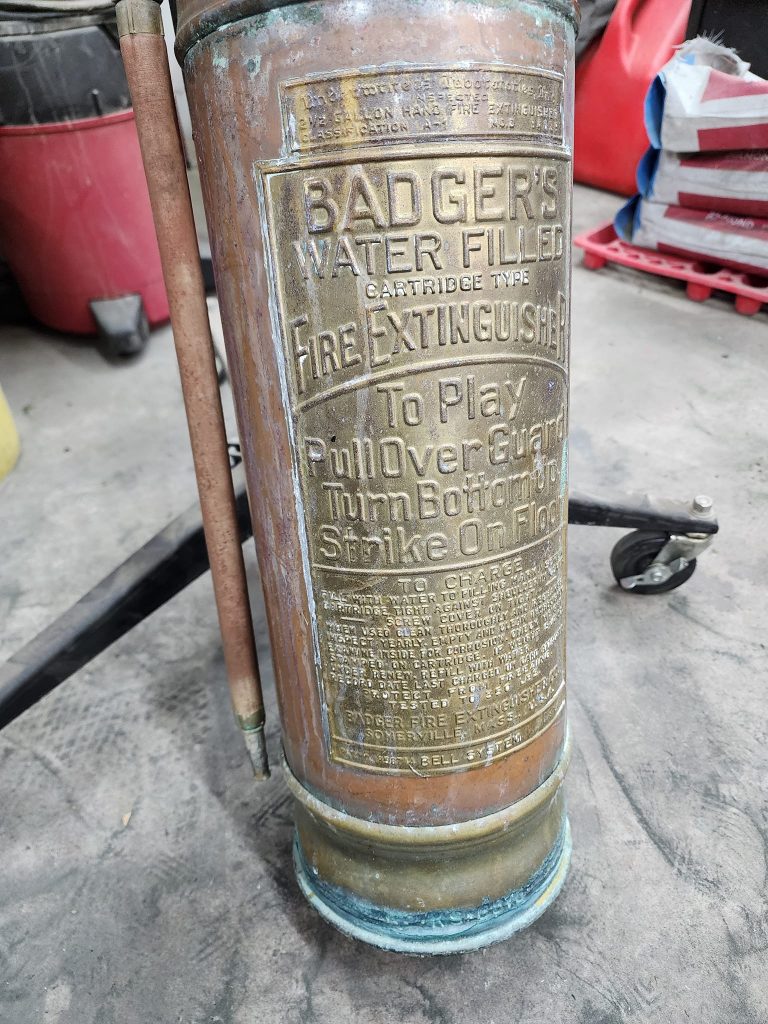
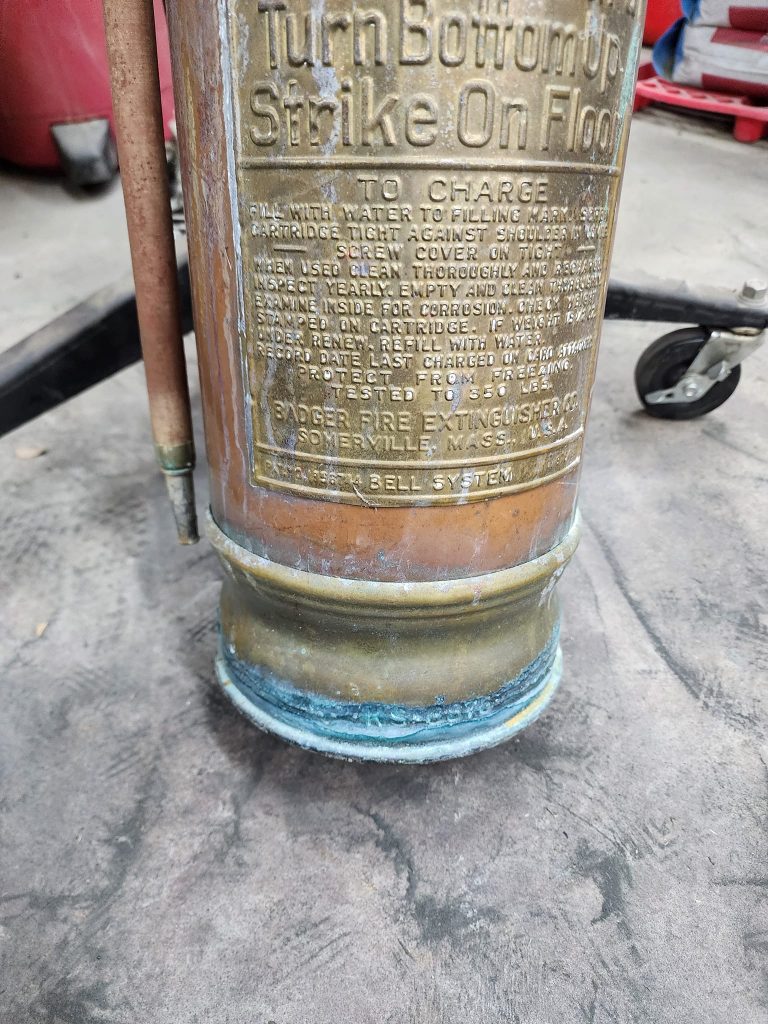
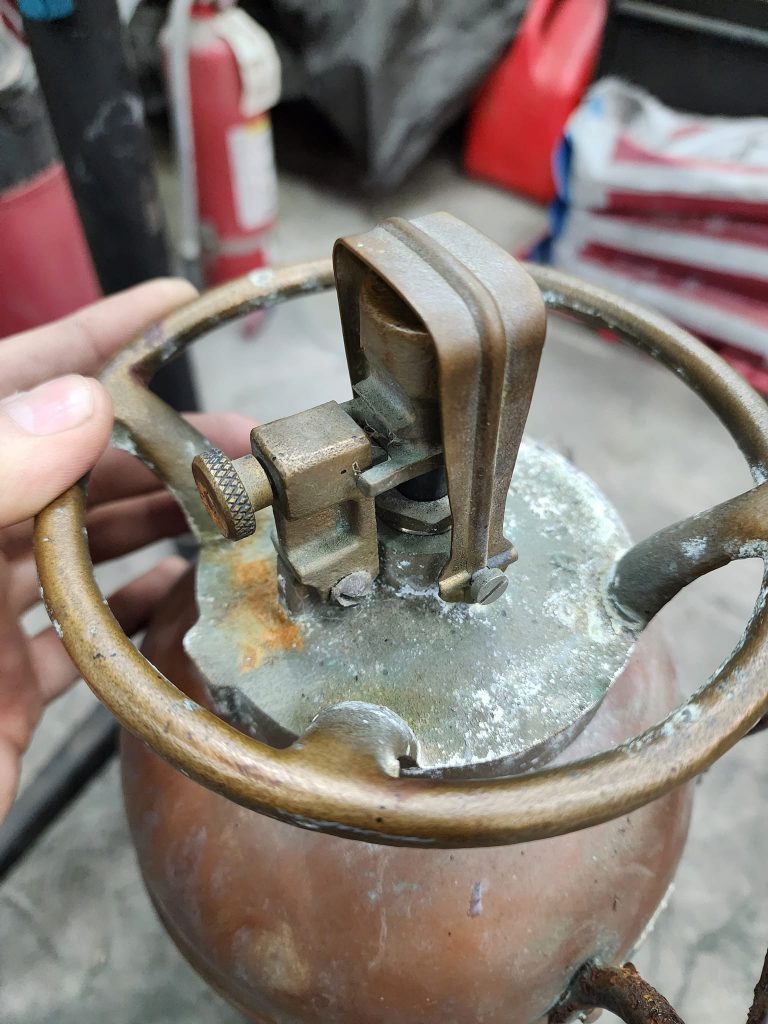
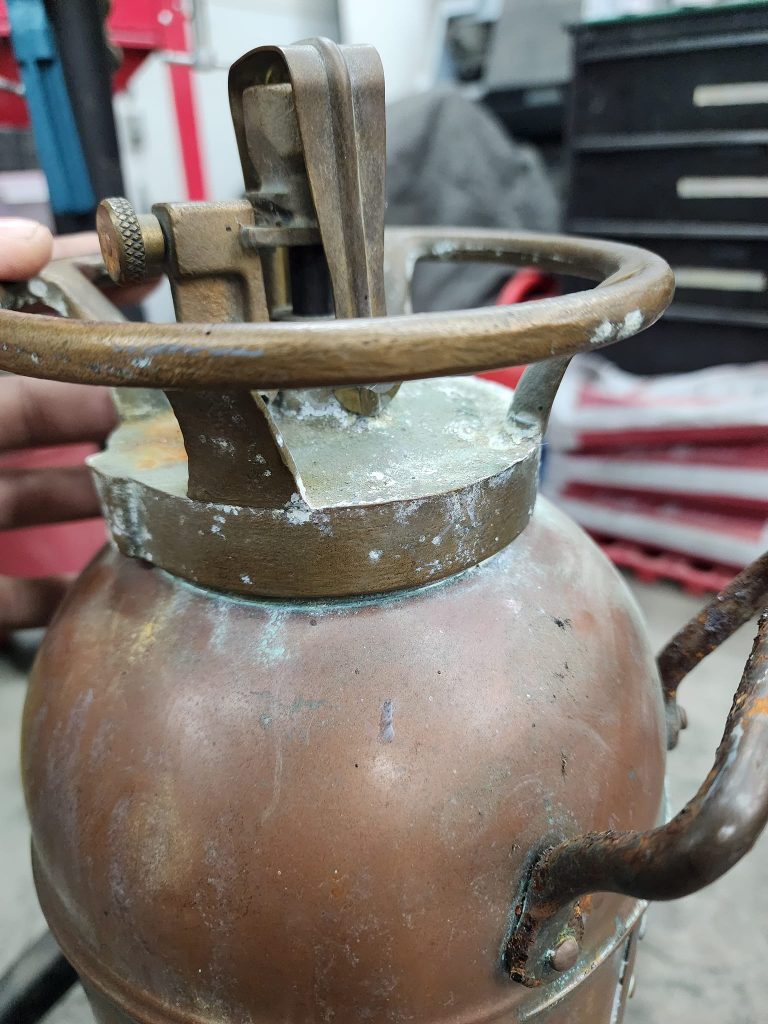
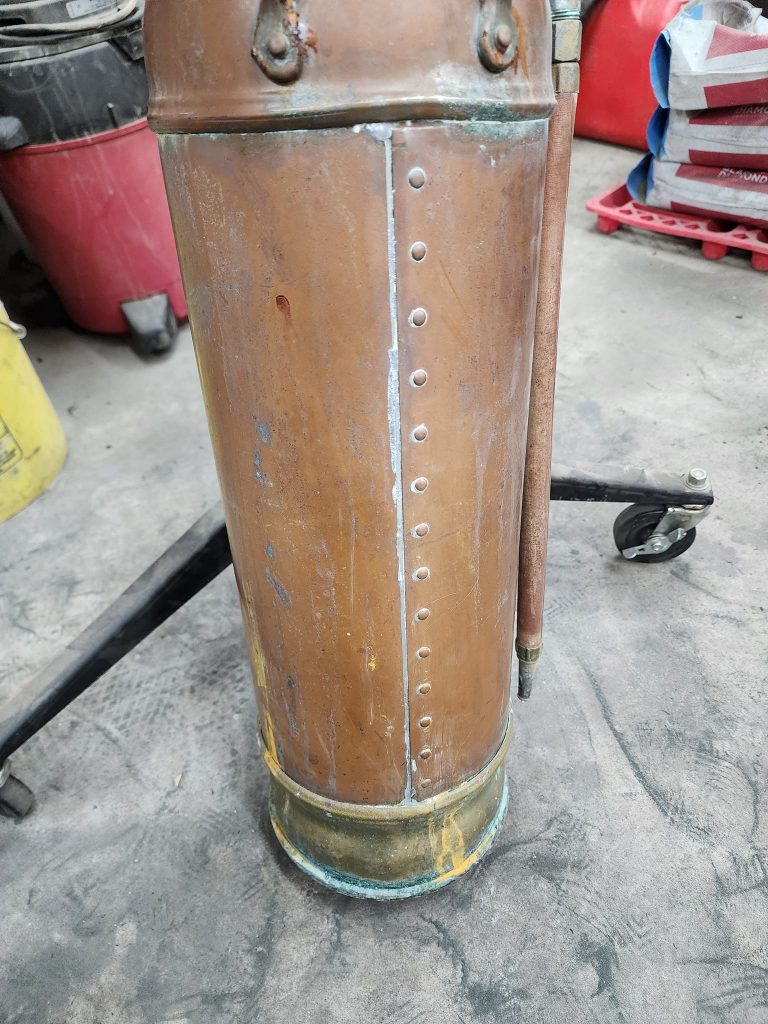
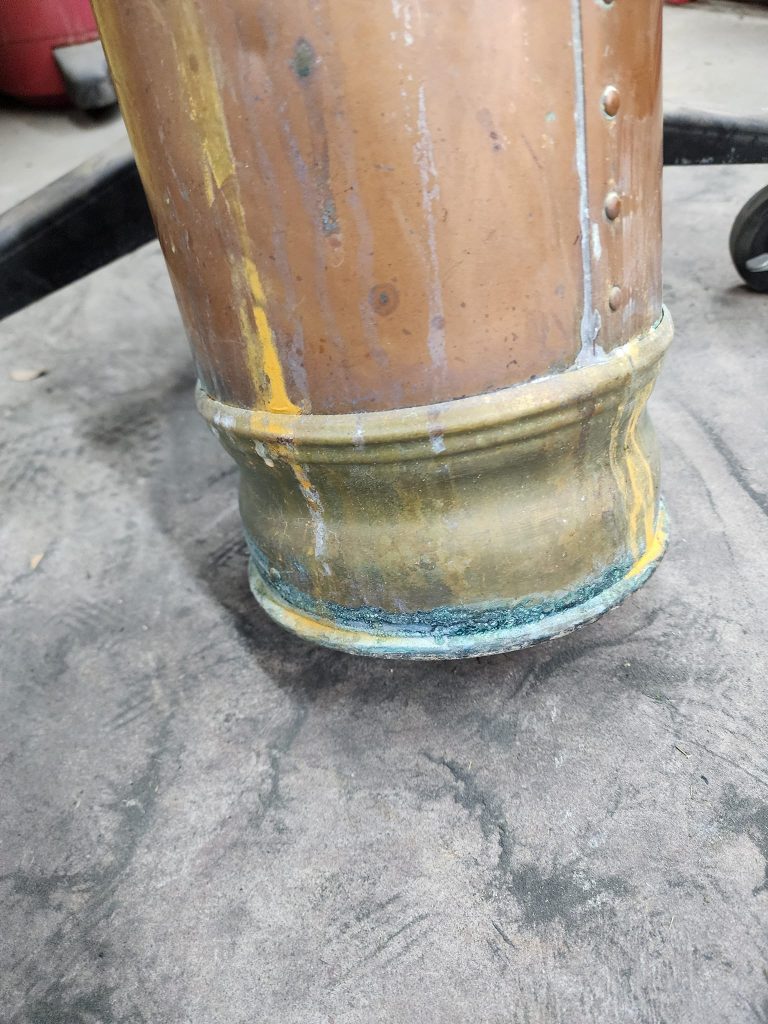
Here are some mid restoration photos:
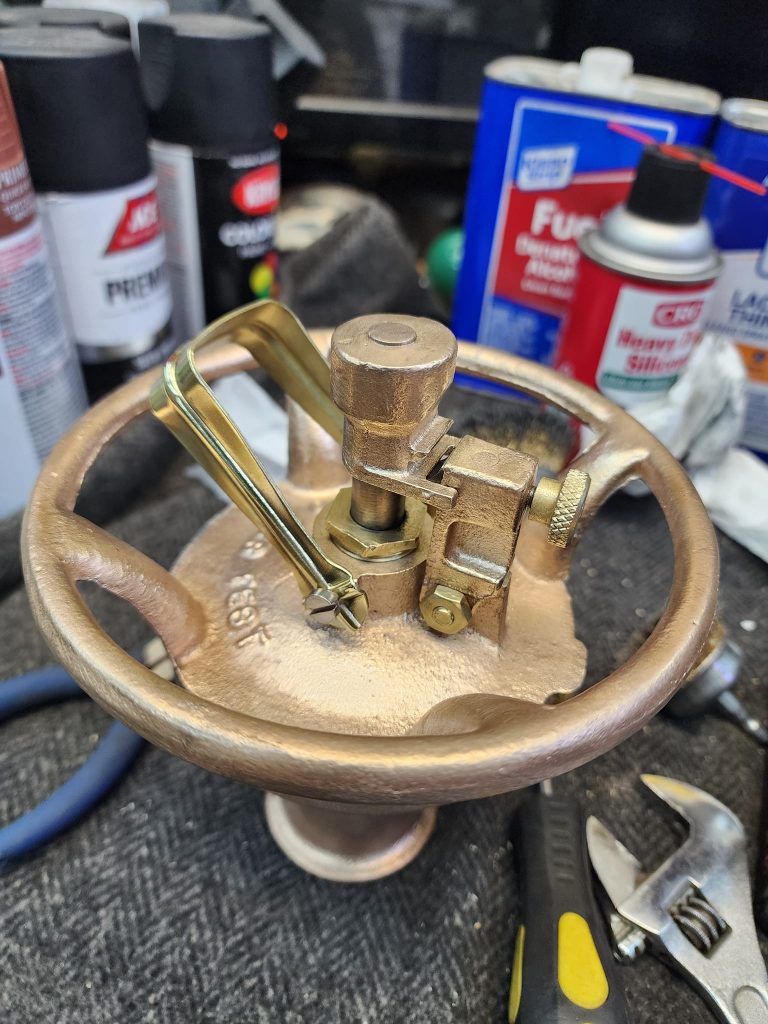
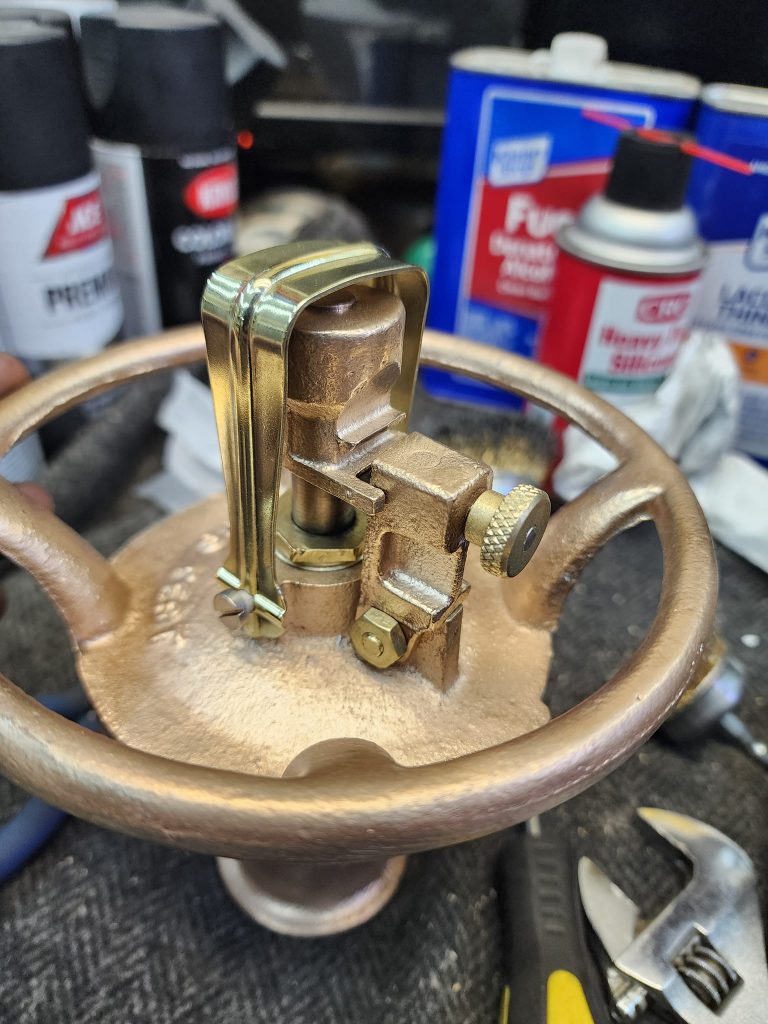
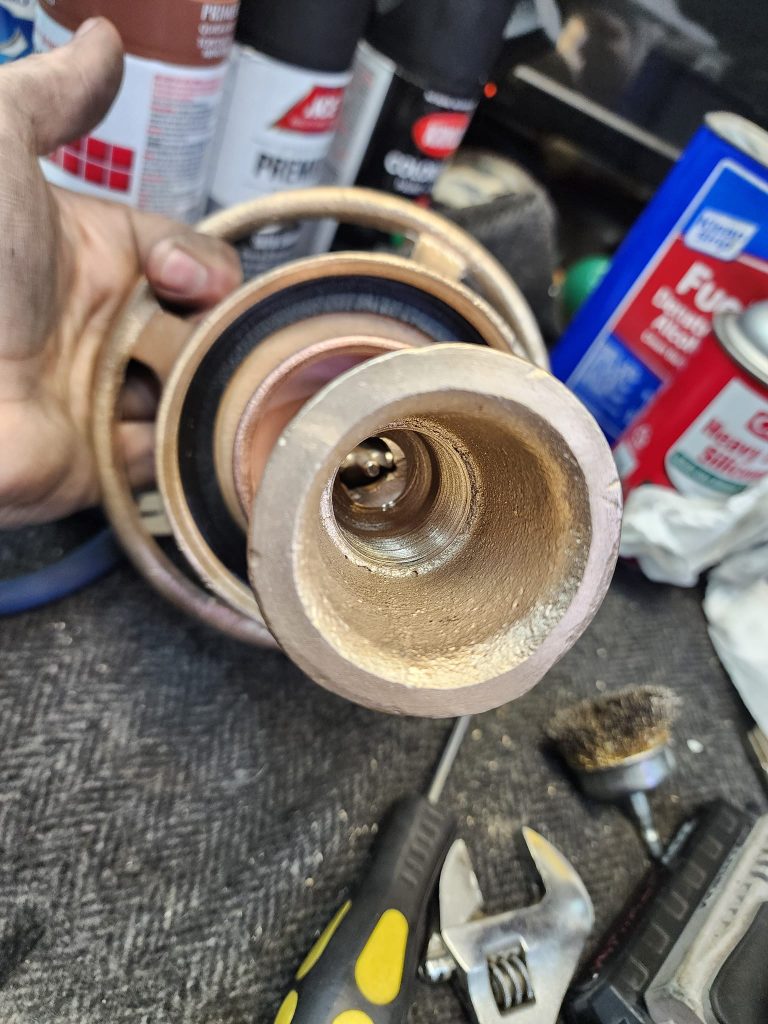
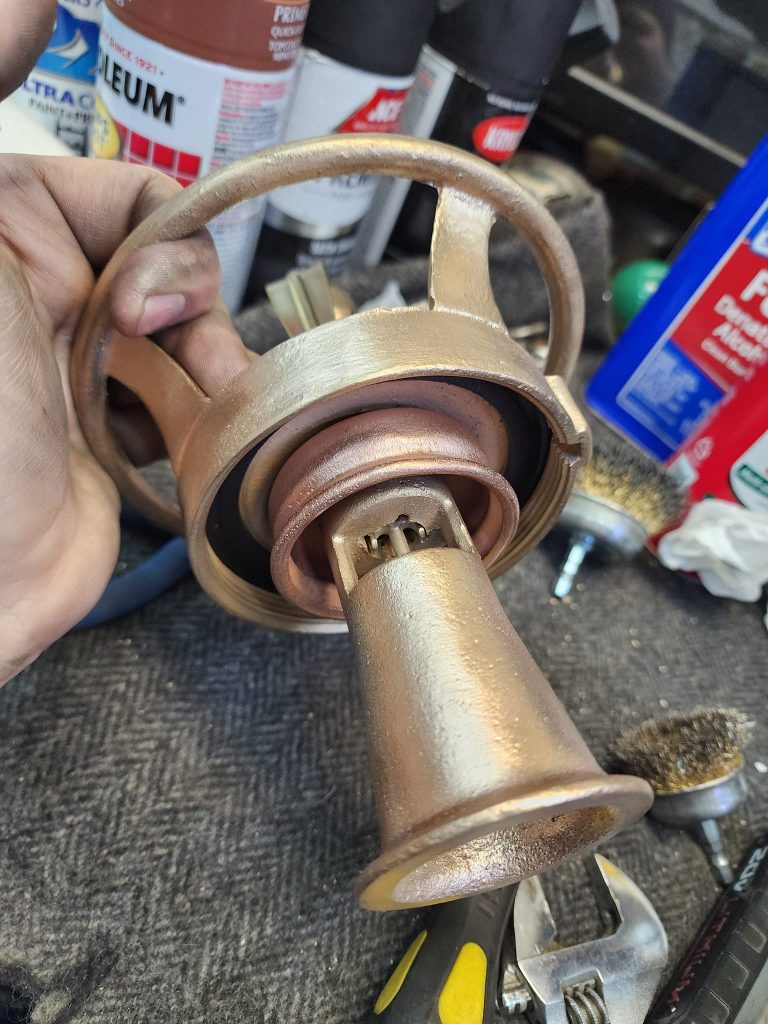
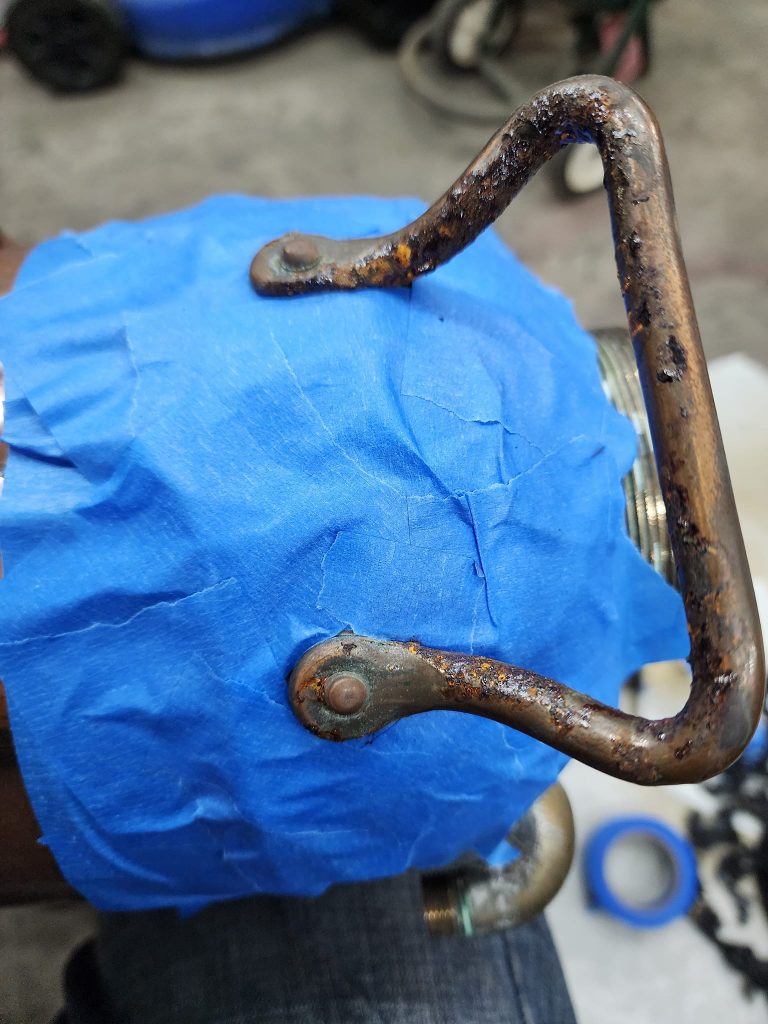
And I must have close to 16 hours of time on the buffer with this to get it to the shine I wanted, so much surface area! Both myself and the shop where covered in black after ha! But boy was it worth it!
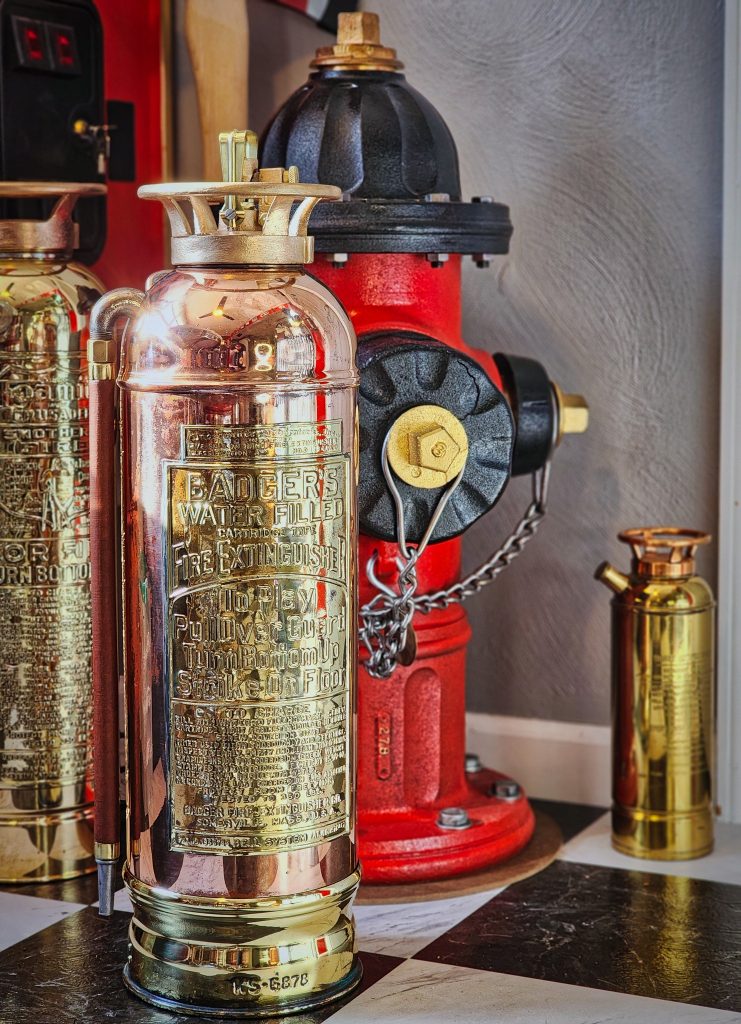
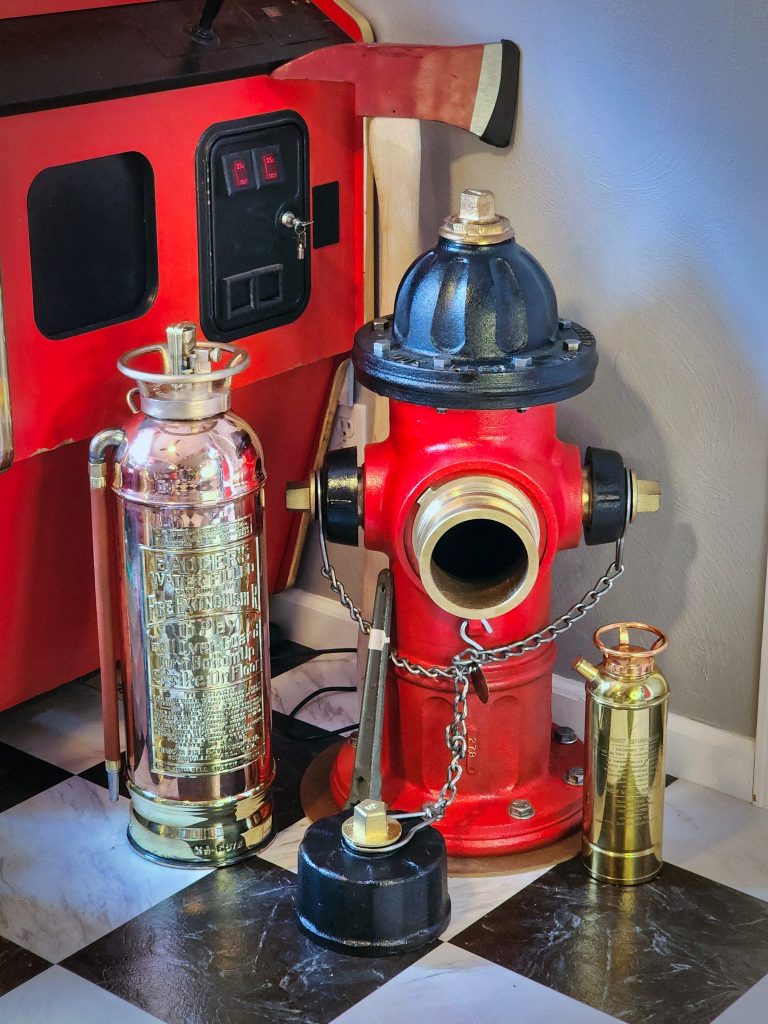
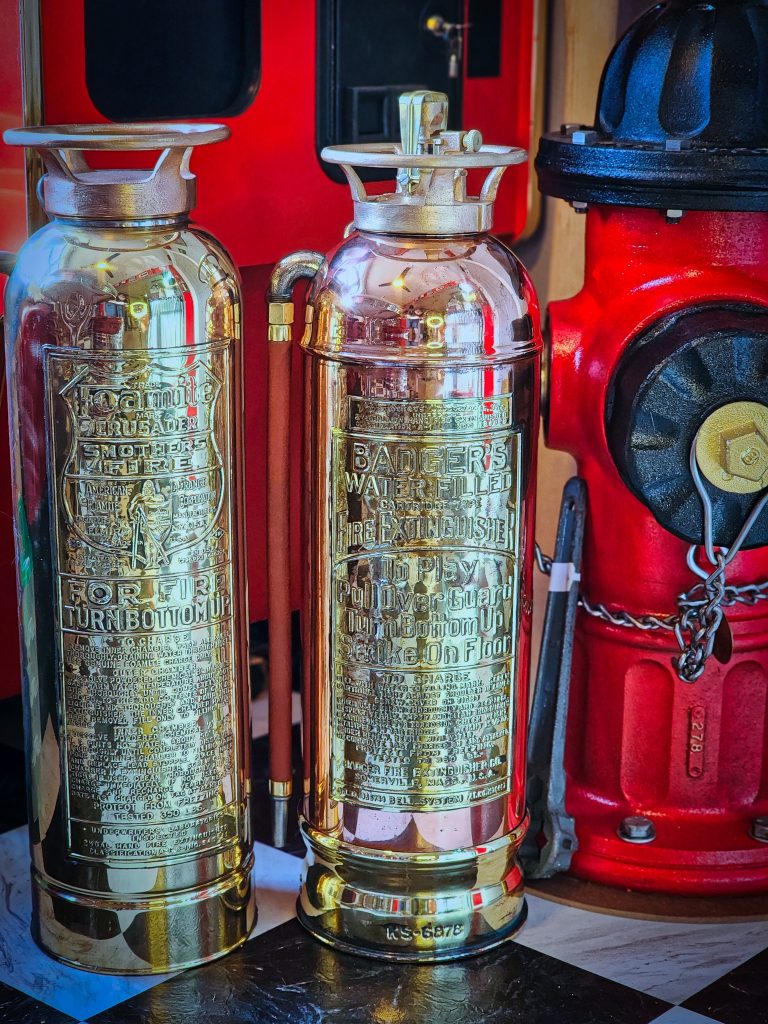
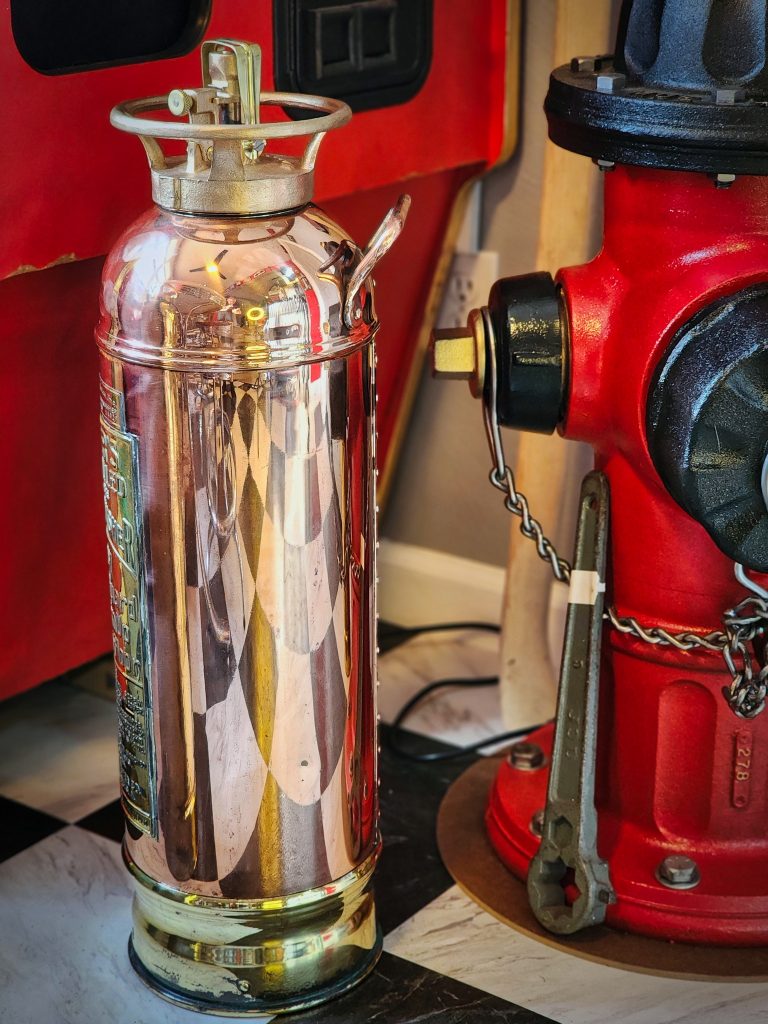
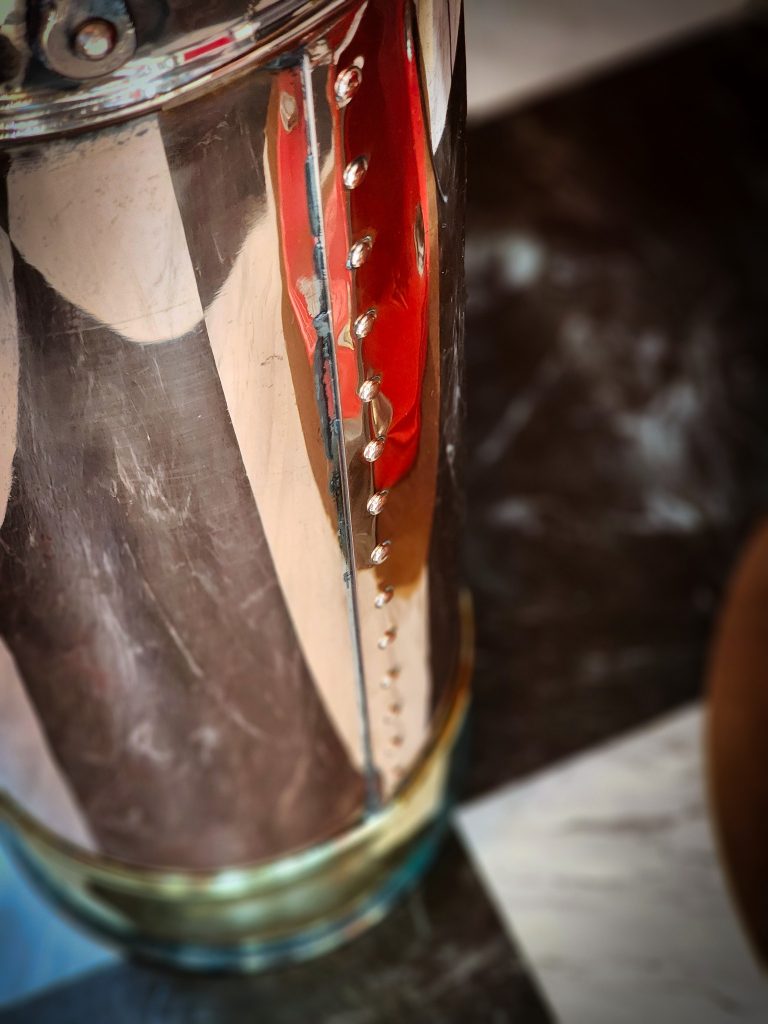
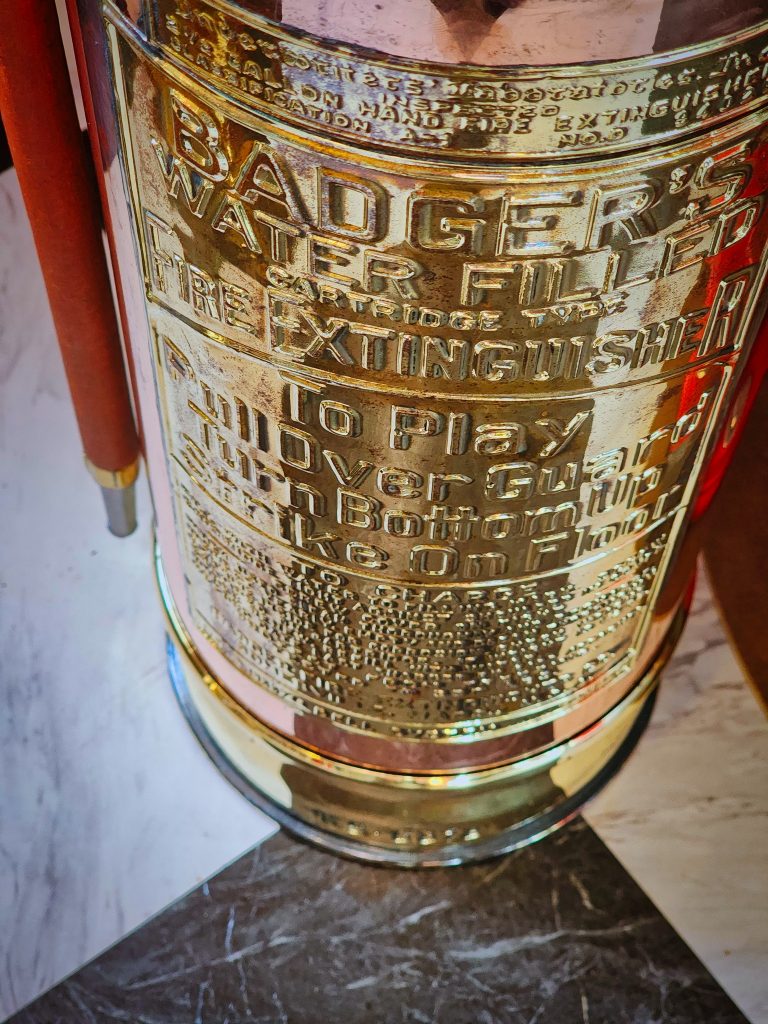
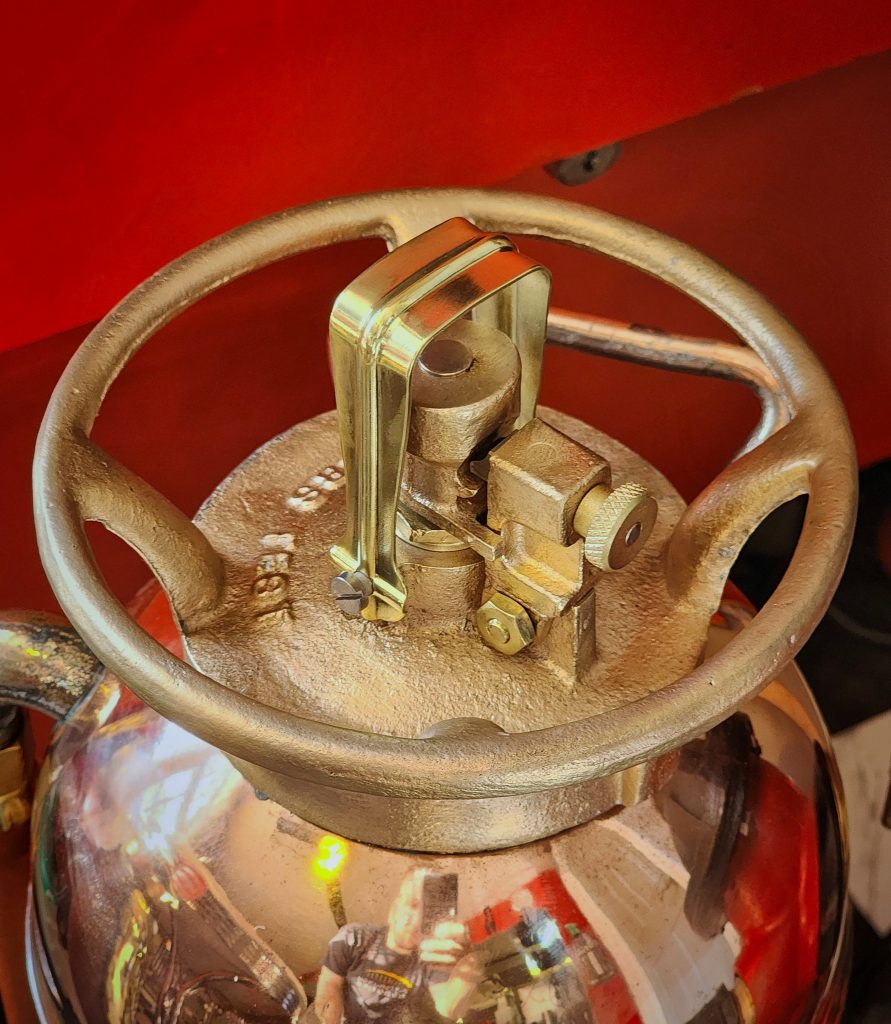
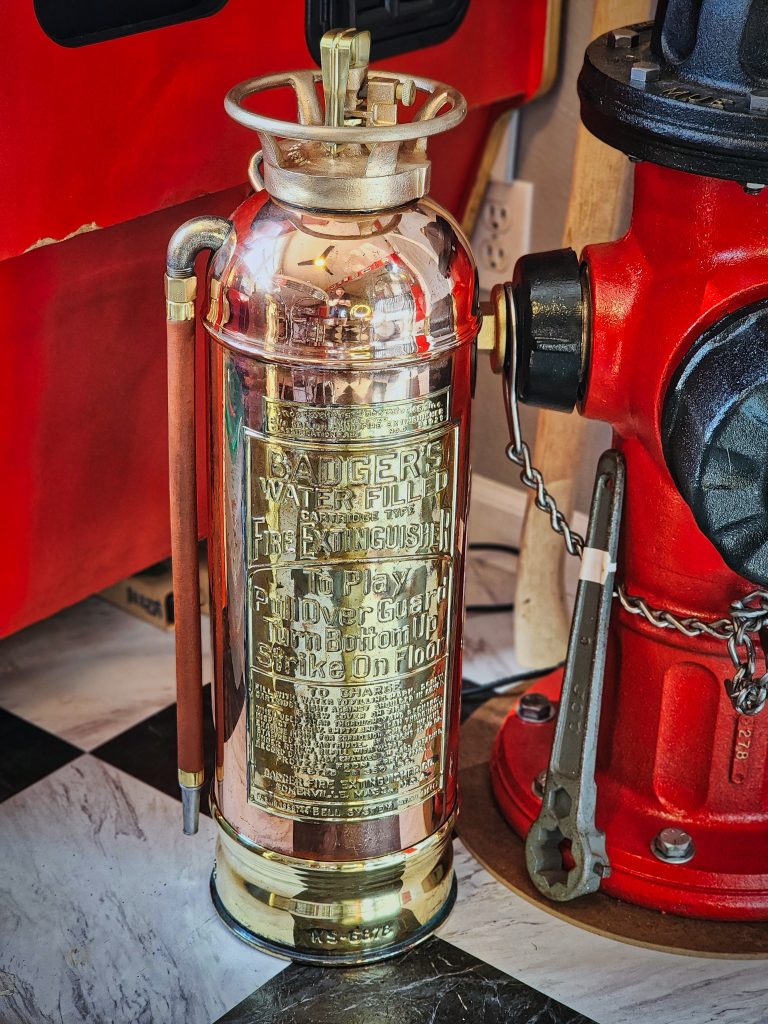
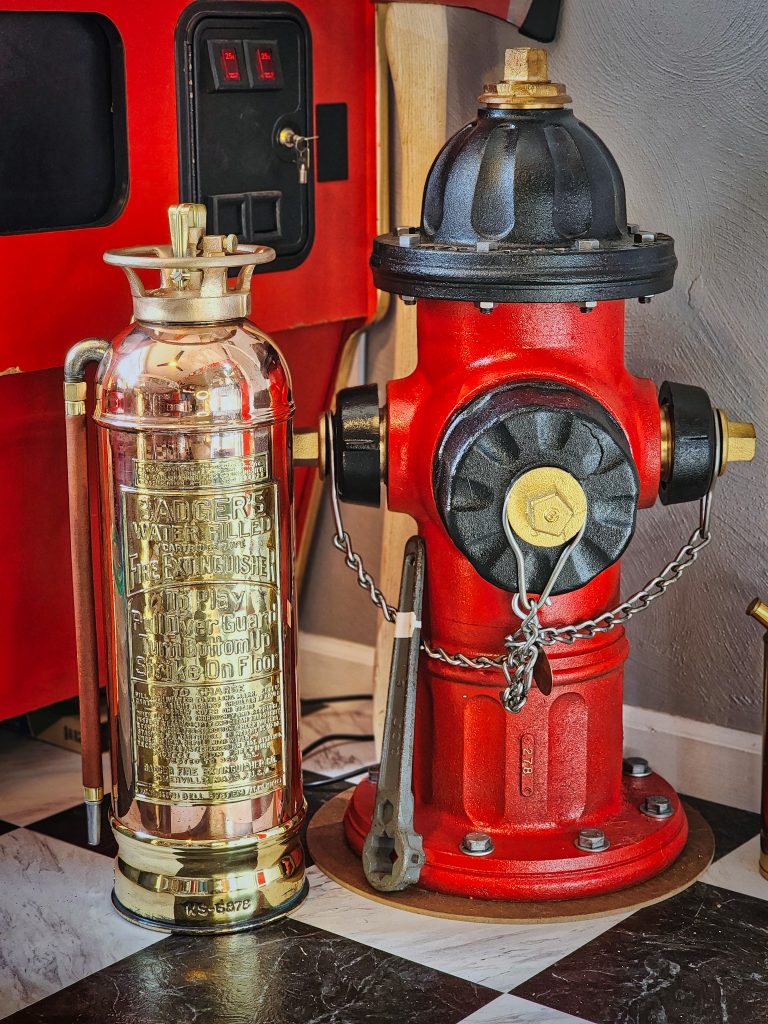
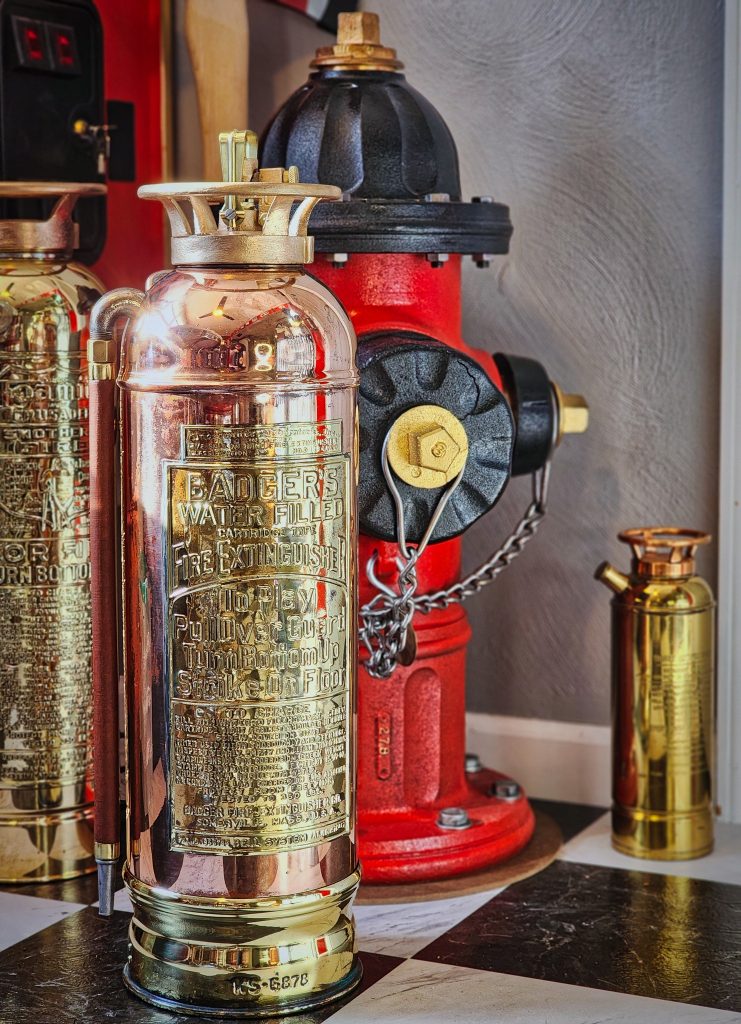
Last, here is a video going into more detail on the project, and how this unique first extinguisher worked!
The Badger Fire Protection Company, founded in 1901, became a leading name in fire safety equipment throughout the early to mid-1900s. By the 1940s, their Class A pressurized water fire extinguisher was a staple in many homes, schools, and businesses. Designed specifically for combating ordinary combustibles such as wood, paper, and cloth, these extinguishers were a crucial tool for ensuring fire safety.
The extinguisher itself is a beautifully crafted piece of equipment. Made from sturdy metal, it features a polished, cylindrical body with a unique operating mechanism that reflects the craftsmanship of its era. Unlike modern extinguishers, it doesn’t have a pin or a handle to squeeze. Instead, it has a lever that needs to be flipped over to reveal a plunger. To activate it, you had to strike the extinguisher on the floor upside down, which would pierce a sealed pressure vessel inside. This action released the pressure into the tank, pushing the water out in a powerful stream. Once activated, there was no way to stop the flow; it continued until all the water was expended. This design was particularly innovative because it was pressurized and did not rely on gravity.
The history of the Badger’s Class A extinguisher is intertwined with the advancements in fire safety protocols during the 20th century. As urbanization increased, so did the risk of fires in densely populated areas. The need for accessible and efficient fire-fighting tools became paramount, and the Badger Fire Protection Company rose to the challenge. Their pressurized water extinguishers provided a practical solution, offering an easy-to-use, reliable method for controlling Class A fires.
Reflecting on the history and use of the 1940s Badger’s Class A pressurized water fire extinguisher, I am struck by how far we’ve come in fire safety technology. Modern extinguishers come in various types, each designed for specific classes of fires, with advanced chemicals and suppression agents. Yet, the fundamental principles of fire safety remain the same: quick access to reliable tools and the knowledge to use them effectively.
Owning a piece of this history is a humbling experience. It’s a reminder of the importance of preparedness and the evolution of technology in keeping us safe. The Badger’s Class A extinguisher, with its robust construction and timeless design, serves as a bridge between the past and present, illustrating the enduring need for effective fire safety measures.
In my collection, this 1940s Badger’s Class A extinguisher holds a special place. It’s more than just a tool; it’s a piece of history that embodies the spirit of innovation and the relentless pursuit of safety. Whether you’re a history enthusiast, a collector of vintage equipment, or simply someone who appreciates the advancements in fire safety, this extinguisher is a fascinating example of mid-20th century ingenuity.
